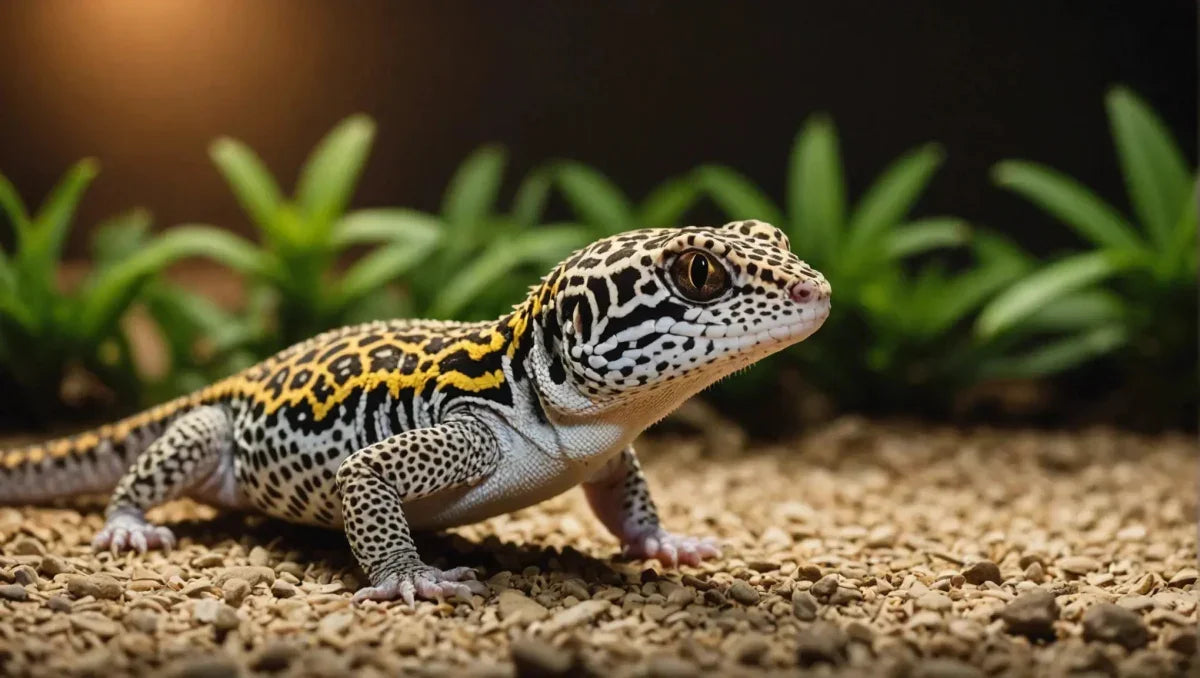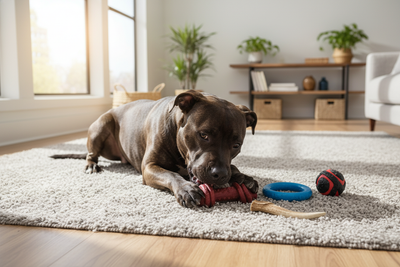Discover the Key to a Thriving Leopard Gecko Habitat

Lighting plays a crucial role in the well-being of your pet gecko, affecting their behavior, health, and overall quality of life. Uncover the secrets to creating the perfect lighting setup, from understanding the significance of UVB and basking lights to optimizing the light cycle for your gecko's natural rhythms. Whether you're a novice reptile owner seeking guidance or a seasoned enthusiast aiming to elevate your gecko's environment, this guide equips you with the knowledge and insights to craft an ideal lighting environment. By delving into the nuances of gecko lighting, you empower yourself to provide the best care possible for your scaly companion. Let's illuminate the path to a healthier, happier leopard gecko together!.
Understanding Different Types of Lighting for Leopard Geckos
UVB Lighting
UVB light is crucial for leopard geckos as it helps them metabolize calcium and prevent metabolic bone disease. Ensure the UVB bulb is changed every 6-12 months as its effectiveness diminishes over time. Place the UVB light near the basking spot to ensure the gecko receives an adequate amount of UVB rays.
Heat Emitters
Heat emitters provide the necessary warmth for leopard geckos, especially during the night when they are active. Ceramic heat emitters are preferred as they do not emit light, allowing the geckos to have a natural day-night cycle. Position the heat emitter at one end of the enclosure to create a temperature gradient.
Incandescent Bulbs
Incandescent bulbs are a good option for providing basking spots in the leopard gecko's enclosure. They emit heat and light, creating a warm area for the gecko to thermoregulate. Use a dimmer or thermostat to control the intensity of the bulb and maintain the basking area at the ideal temperature.
LED Lighting
LED lights can be used to simulate moonlight in the gecko's enclosure, providing a gentle glow during the night without disrupting their sleep patterns. Avoid using bright white LEDs at night as they can disturb the gecko's natural behavior.
When setting up lighting for leopard geckos, it's important to create a gradient of temperatures in the enclosure, with cooler and warmer spots to allow the gecko to self-regulate its body temperature. Always monitor the temperature levels closely to ensure they are within the appropriate range for leopard geckos' health and well-being. Remember to provide hiding spots and foliage to allow the gecko to feel secure in its environment.
Choosing the Right Lighting Setup
Factors to Consider When Selecting Lighting
When it comes to setting up lighting for any space, whether it is a home, office, or studio, there are several important factors to consider. The right lighting setup can significantly impact the ambiance, mood, and functionality of the space. From choosing the type of lighting fixtures to creating a balanced lighting environment, each decision plays a crucial role in achieving the desired lighting effects.
-
Purpose of the Space: Consider the function of the space and how lighting can enhance its usability. Whether it's task lighting for a workspace or ambient lighting for a living room, understanding the purpose will guide your lighting choices.
-
Natural Light: Take into account the natural light available in the space. Utilize daylight to supplement artificial lighting and create a more dynamic environment.
-
Color Temperature: Choose the right color temperature for the space. Warmer temperatures (2700K-3000K) create a cozy atmosphere, while cooler temperatures (3500K-5000K) are better for task-oriented areas.
-
Energy Efficiency: Opt for energy-efficient lighting solutions such as LED bulbs to reduce electricity consumption and lower utility bills.
Creating a Balanced Lighting Environment
-
Layered Lighting: Incorporate different layers of lighting, including ambient, task, and accent lighting, to create depth and dimension in the space.
-
Dimmers and Controls: Install dimmer switches and lighting controls to adjust the intensity of the light according to the time of day and specific lighting needs.
-
Avoid Glare: Position light fixtures strategically to prevent glare and ensure a comfortable lighting experience for occupants.
-
Lighting Design: Pay attention to the aesthetics of lighting fixtures and how they complement the overall design scheme of the space.
Additional Tips for Optimal Lighting:
-
Lighting Placement: Consider the placement of lighting fixtures to ensure even distribution of light throughout the space. Avoid placing fixtures too close together or too far apart.
-
Task Lighting Importance: Understand the importance of task lighting in specific areas like kitchens, study areas, or workspaces to provide focused illumination for activities.
-
Smart Lighting Solutions: Explore smart lighting options that offer convenience, energy savings, and customizable settings through smartphone apps or voice control.
-
Lighting Maintenance: Regularly clean light fixtures and replace bulbs when needed to maintain optimal lighting performance and prolong the lifespan of the fixtures.
By incorporating these additional tips along with the fundamental considerations, you can create a well-rounded lighting setup that not only meets your practical needs but also enhances the aesthetic appeal of your space. Remember, lighting is a versatile design element that can transform the mood and functionality of any environment when chosen and implemented thoughtfully.
Setting Up Lighting in a Leopard Gecko Habitat
Proper Placement of Lights
When setting up lighting in a leopard gecko habitat, it is crucial to ensure proper placement of lights. Leopard geckos are nocturnal creatures, so they do not require UVB lighting. However, they do benefit from a light source that mimics their natural day-night cycle. Position the light source in such a way that it provides a day-night cycle without disturbing the gecko's sleep.
Establishing a Lighting Schedule
Establishing a lighting schedule is important for the overall well-being of your leopard gecko. Make sure to provide around 10-12 hours of light during the day and 10-12 hours of darkness at night. This schedule helps regulate their internal clock and promotes natural behaviors.
Maintaining Optimal Temperature and Light Levels
To ensure your leopard gecko's health, it is essential to maintain optimal temperature and light levels in their habitat. Use a thermometer to monitor the temperature and adjust the lighting accordingly. The temperature should range between 75-85°F (24-29°C) during the day and can drop slightly at night. Proper temperature and lighting levels are crucial for your gecko's digestion, metabolism, and overall well-being.
Importance of Lighting in Leopard Gecko Care
Lighting plays a significant role in the care of leopard geckos beyond just providing illumination. While they do not require UVB lighting, exposure to a natural day-night cycle can positively impact their behavior and breeding patterns. The presence of a consistent lighting schedule helps regulate their circadian rhythm, reducing stress levels and ensuring a healthier, more active gecko.
Choosing the Right Lighting
When selecting lighting for your leopard gecko habitat, opt for low-wattage bulbs that emit a soft, warm glow. Avoid intense, bright lights that can disrupt your gecko's sleep patterns. Additionally, consider using timers to automate the lighting schedule, providing consistency even when you are not around.
Monitoring Light Levels
Regularly check the intensity of the lighting in your gecko's habitat to ensure it remains at an appropriate level. Too much light can cause stress and discomfort, while insufficient light can lead to lethargy and improper metabolism. Adjust the placement and brightness of the lights as needed based on your gecko's behavior and well-being.
Additional Tips for Lighting Setup
- Create hiding spots within the habitat where your gecko can retreat from the light if needed.
- Replace bulbs regularly to maintain optimal lighting conditions.
- Consider using ceramic heat emitters or heat mats for supplemental heat without disrupting the lighting schedule.
By paying attention to the lighting setup in your leopard gecko's habitat and providing a suitable environment, you can ensure their overall health and well-being for years to come.
Conclusion
Proper lighting is essential for the health and well-being of leopard geckos. By providing the correct type of lighting, such as a combination of UVB and heat lamps, leopard geckos can thrive in captivity. It is crucial to ensure that the lighting setup mimics their natural habitat to prevent health issues and promote their natural behaviors. Remember, investing in quality lighting is investing in the overall health and happiness of your leopard gecko.





